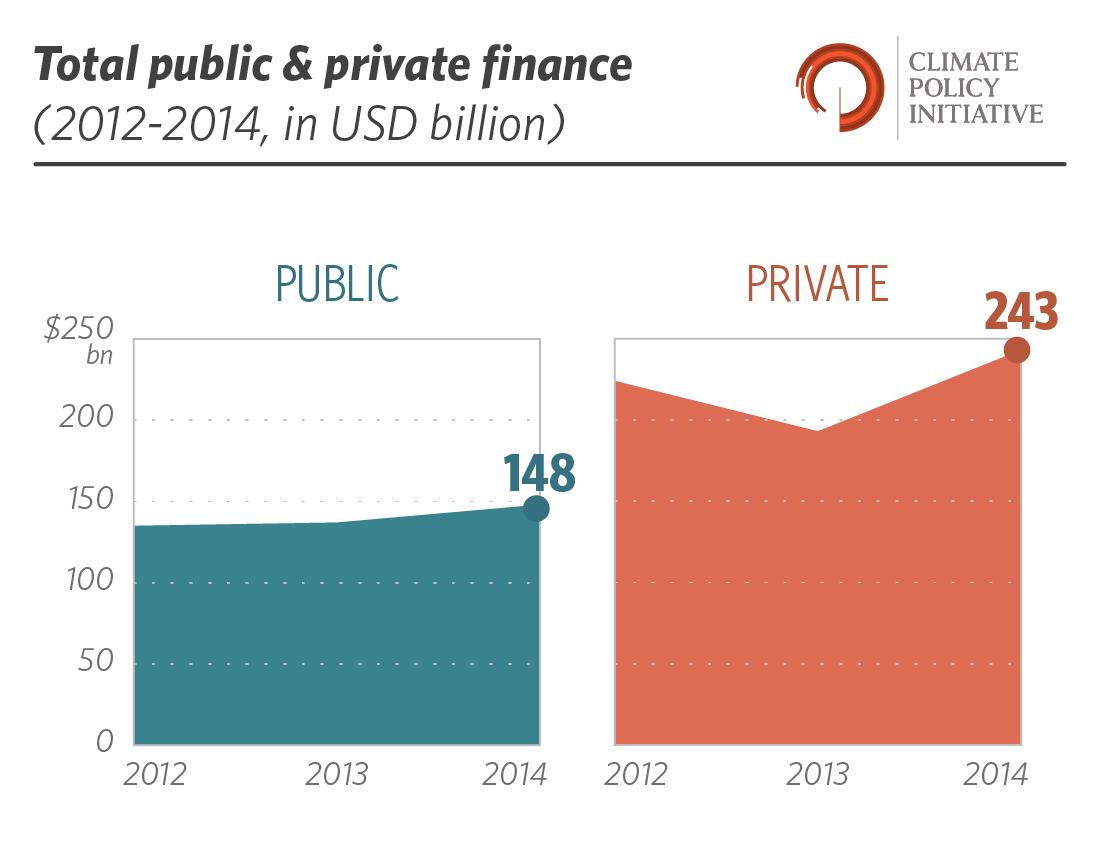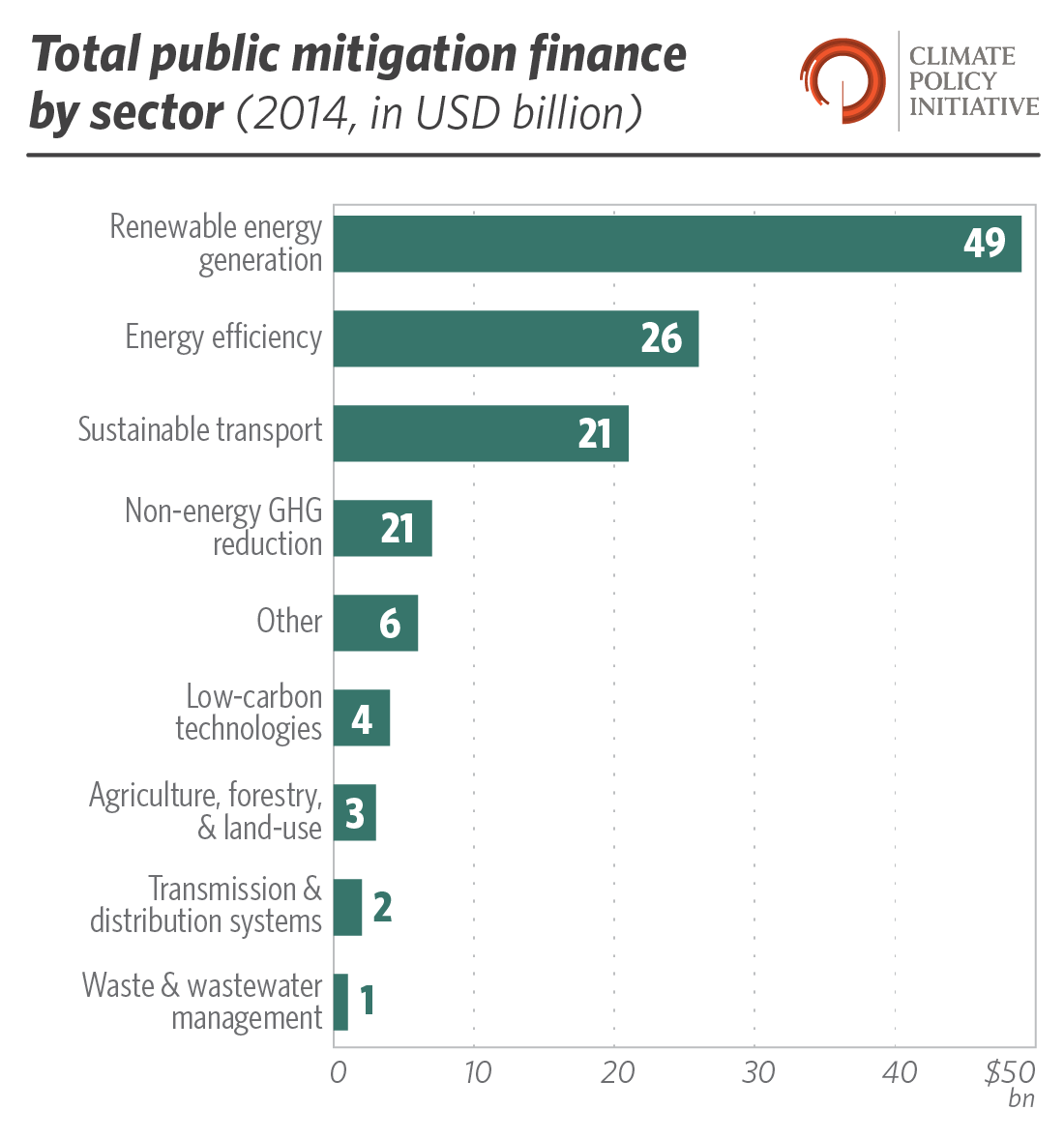With the COP21 climate summit in Paris just two weeks away, new data from the Climate Policy Initiative’s annual report shows modest but steady progress in green investments, as public and private institutions seek to fund, and capitalize on, the global energy transition. Climate financing hit $391 billion in 2014, an increase of nearly 20 percent over the previous year. The report offers points of optimism, including unprecedented private-sector investments in green technology. But that optimism has its limits: The CPI says that precautions have tilted heavily toward mitigation strategies—slowing climate change—to the detriment of adaptation strategies—preparing at-risk countries for inevitable humanitarian disasters.
The question now is how to raise that number aggressively in the coming decades while allocating it better.

As we can see on the mitigation side, the most substantial public funding went to renewable energy generation ($49 billion) in 2014, with $26 billion to energy efficiency, and $21 billion to sustainable transport:

Private sector investments in green initiatives have been huge: $243 billion into renewable energy last year, up 26 percent from 2013, thanks in part to various “supportive” government policies. China, too, proved a major hub of green investment growth: Thirty-four percent of all private investments in 2014 were Chinese. Worldwide government investment in clean energy totaled $148 billion in 2014.
Yet adaptation funding—which includes investments in smarter weather monitoring, infrastructure, and especially rugged, sustainable agricultural innovation—has remained stagnant, and represents just 17 percent of funding for developing nations over 2013 and 2014:

Mitigation remains the central problem most people associate with climate change: How do we keep the Earth from warming itself into oblivion? That’s the question that will keep people up late in Paris next month, haggling over how much everyone can afford to de-carbonize our economies. But the adaptation question is equally pressing, and—even if we achieve global carbon neutrality by 2060 or 2070—will become ever more urgent.
In funding mitigation, the CPI estimates that we need investments totaling $16.5 trillion between 2015 and 2030 “to shift the global energy system in line with the 2 degree goal.” At Paris, the BRICS countries will have some very fair questions about how to sustain their economies while lowering emissions; the V20 will have yet-more pressing questions about adapting to the most imminent effects of climate change that no mitigation effort, at this point, can forestall.

“Catastrophic Consequences of Climate Change” is Pacific Standard’s aggressive, year-long investigation into the devastating effects of climate change—and how scholars, legislators, and citizen-activists can help stave off its most dire consequences.





